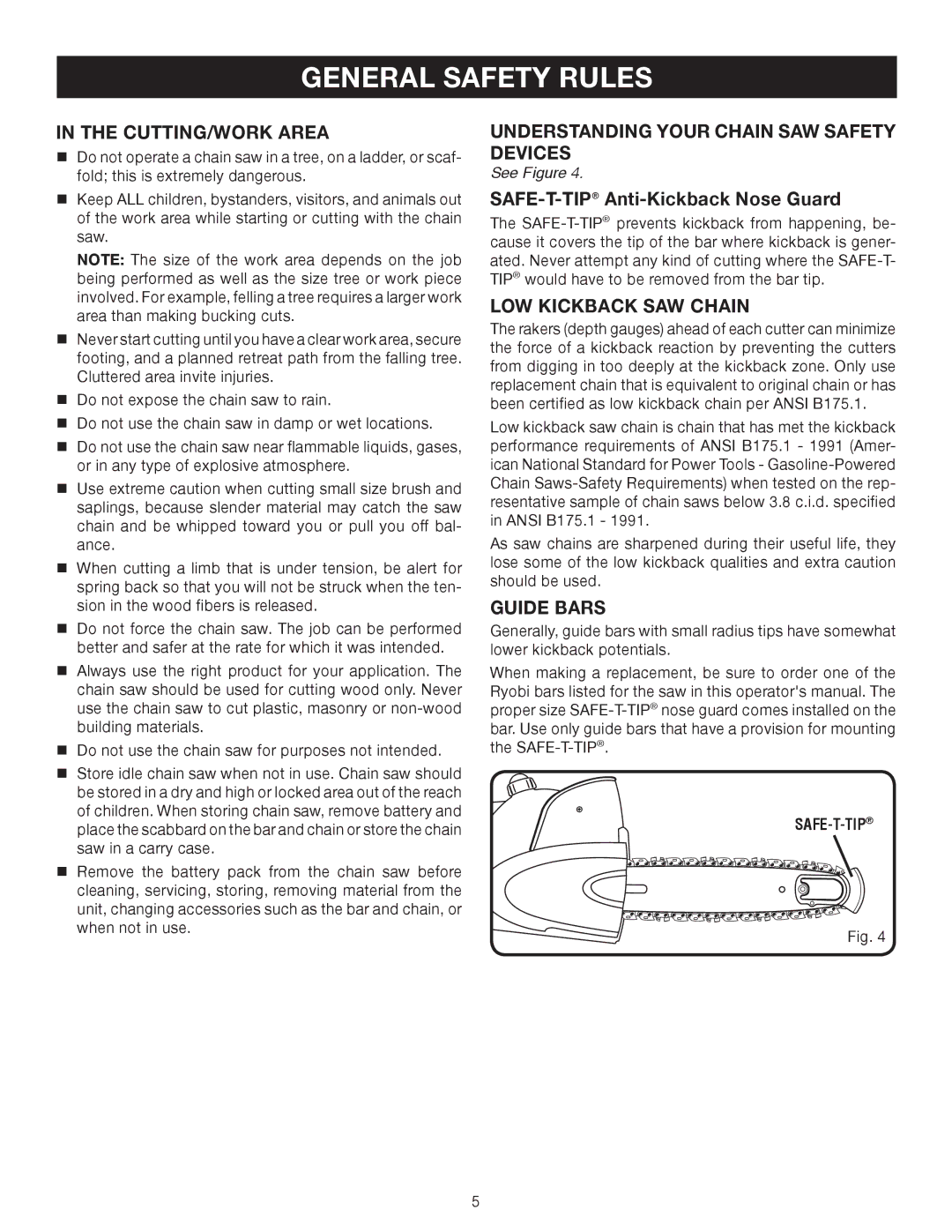
general SAFETY RULES
In The Cutting/Work Area
nDo not operate a chain saw in a tree, on a ladder, or scaf- fold; this is extremely dangerous.
nKeep ALL children, bystanders, visitors, and animals out of the work area while starting or cutting with the chain saw.
NOTE: The size of the work area depends on the job being performed as well as the size tree or work piece involved. For example, felling a tree requires a larger work area than making bucking cuts.
nNever start cutting until you have a clear work area, secure footing, and a planned retreat path from the falling tree. Cluttered area invite injuries.
nDo not expose the chain saw to rain.
nDo not use the chain saw in damp or wet locations.
nDo not use the chain saw near flammable liquids, gases, or in any type of explosive atmosphere.
nUse extreme caution when cutting small size brush and saplings, because slender material may catch the saw chain and be whipped toward you or pull you off bal- ance.
nWhen cutting a limb that is under tension, be alert for spring back so that you will not be struck when the ten- sion in the wood fibers is released.
nDo not force the chain saw. The job can be performed better and safer at the rate for which it was intended.
nAlways use the right product for your application. The chain saw should be used for cutting wood only. Never use the chain saw to cut plastic, masonry or
nDo not use the chain saw for purposes not intended.
nStore idle chain saw when not in use. Chain saw should be stored in a dry and high or locked area out of the reach of children. When storing chain saw, remove battery and place the scabbard on the bar and chain or store the chain saw in a carry case.
nRemove the battery pack from the chain saw before cleaning, servicing, storing, removing material from the unit, changing accessories such as the bar and chain, or when not in use.
Understanding Your Chain Saw Safety Devices
See Figure 4.
SAFE-T-TIP® Anti-Kickback Nose Guard
The
Low Kickback Saw Chain
The rakers (depth gauges) ahead of each cutter can minimize the force of a kickback reaction by preventing the cutters from digging in too deeply at the kickback zone. Only use replacement chain that is equivalent to original chain or has been certified as low kickback chain per ANSI B175.1.
Low kickback saw chain is chain that has met the kickback performance requirements of ANSI B175.1 - 1991 (Amer- ican National Standard for Power Tools -
As saw chains are sharpened during their useful life, they lose some of the low kickback qualities and extra caution should be used.
Guide Bars
Generally, guide bars with small radius tips have somewhat lower kickback potentials.
When making a replacement, be sure to order one of the Ryobi bars listed for the saw in this operator's manual. The proper size
Fig. 4
